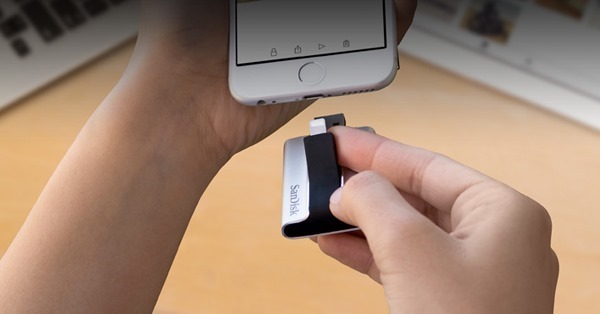USB flash drives are fairly cheap, and nowadays, you can pick one up online with capacities exceeding 100GB for next to nothing. In fact, 128GB thumb drives are fairly commonplace, and effortlessly convenient since files can be moved around without the need for hard drives or cloud storage, which requires a decent Internet connection when we’re talking about the hundreds of gigabytes. Today, SanDisk has launched a variant of its existing flash drive that not only offers 128GB for an enticing sub-$150 price point, but it also packs its own Lightning connector that brings Apple’s iPhone and iPad into play.
The closed-source iOS ecosystem has meant that dragging and dropping files on an iPhone, iPad or iPod touch is off the agenda – unless you happen to be jailbroken, that is – yet the iXpand flash drive offers a degree of solace by letting you manage files and stream content from your flash drive right to your iOS device.
The iXpand itself is not a new thing from SanDisk, but the introduction of the 128GB model is, and with a price point of $149.99, it offers an attractive prospect to iOS device owners looking for a bit more real estate to play around with.
After all, Apple charges a considerable amount per storage increment when it comes to the iPhone and iPad, and if you were to stump up the $150 for the SanDisk iXpand, you could cram it with, say, a bunch of your video content for watching on your device without having forked out vast sums for the 128GB variants the iPhone / iPad.
It’s not all about streaming, though. The SanDisk iXpand companion app, available via the App Store, can be configured to automatically sync your photos and videos as well, meaning you’ve a backup option that doesn’t involve iCloud or any other cloud-based system. And hey, if you don’t need 128GB, there are smaller-capacity variants already available at much lower cost.
The only real downside, from what I can see, is that it’s USB 2.0, which is a major downer given that most new hard drives and computing equipment is compatible with USB 3.0 as standard. The speed difference is significant, as anybody who has used USB 3.0 will attest, and when you’re talking about capacities of 128GB, transfer times are going to be significantly hindered by the fact that the product is based on an older standard.
Still, if you’re interested in a USB drive that also supplements the iOS experience, check the SanDisk website for more info.
You can follow us on Twitter, add us to your circle on Google+ or like our Facebook page to keep yourself updated on all the latest from Microsoft, Google, Apple and the Web.

